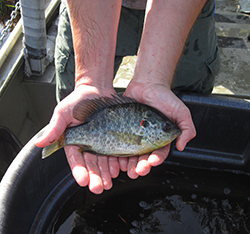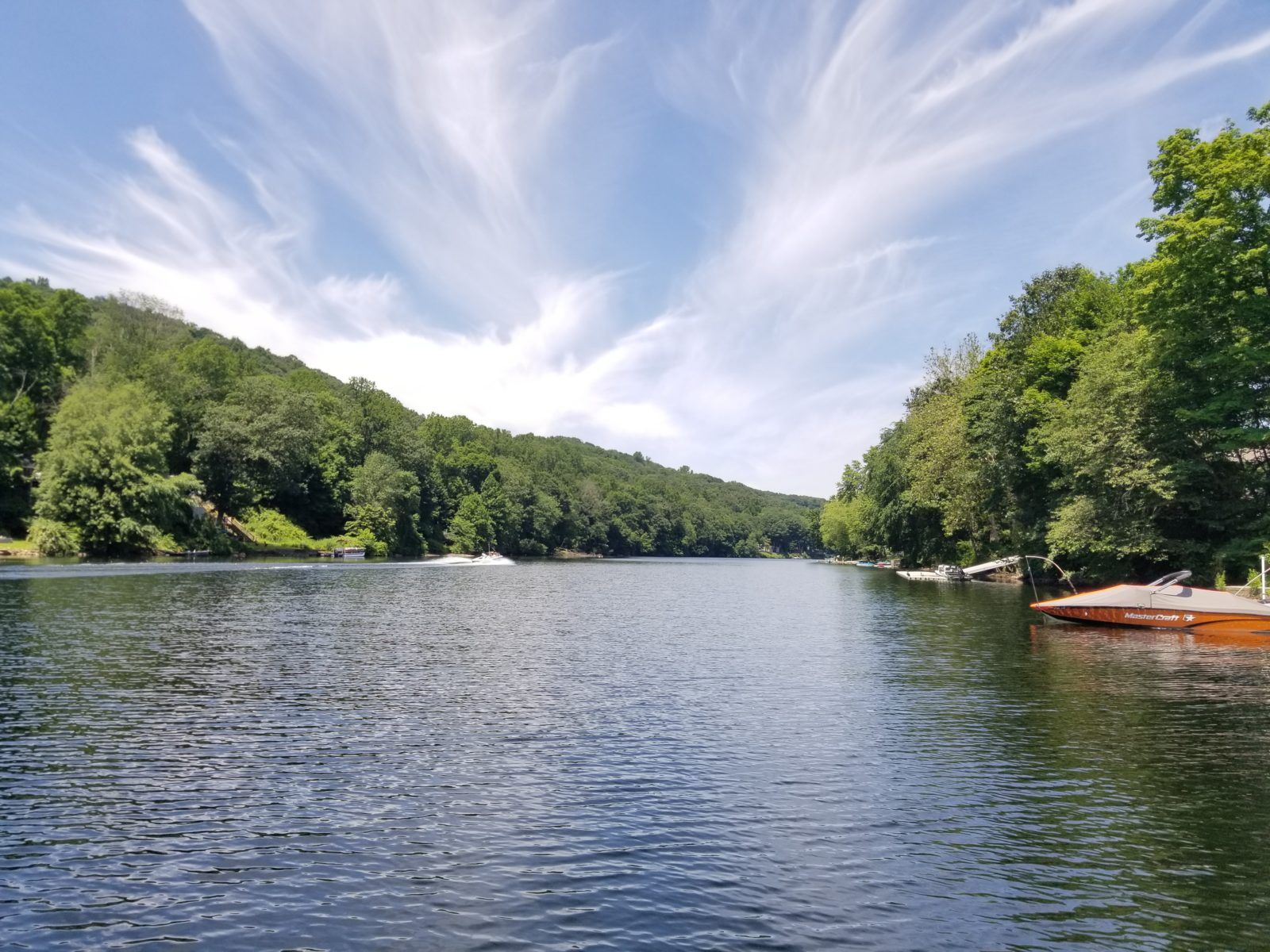Fisheries Management: Red Ear Sunfish and Parasite Control
January 30th, 2015
Written by Industry Experts Aaron Cushing and David Beasley, Fisheries Biologists
 A few freshwater species of fish have a very unique diet. One of these is the redear sunfish (Lepomis microlophus), also called a shellcracker. Redear play a distinctive role in the balance of a pond ecosystem by targeting mollusks such as snails and small clams as their primary food source. Pond managers and fisheries biologists often stock redear into ponds because their unique diet helps break the life cycle of fish parasites that hamper the health of other fish.
A few freshwater species of fish have a very unique diet. One of these is the redear sunfish (Lepomis microlophus), also called a shellcracker. Redear play a distinctive role in the balance of a pond ecosystem by targeting mollusks such as snails and small clams as their primary food source. Pond managers and fisheries biologists often stock redear into ponds because their unique diet helps break the life cycle of fish parasites that hamper the health of other fish.
The life cycle of many aquatic parasites have three stages within three separate animal hosts. The two most common types are “yellow grub” and “black spot” parasites. Their first hosts are mollusks, the second is a fish that has been infected by a free swimming life stage of the parasite, and then finally a bird that has consumed an infected fish. To break this lifecycle redear sunfish consume the mollusks without becoming infected themselves, in the process killing the larval stage of the parasite. What makes this possible is the readear’s extensive “pharyngeal teeth” which enables them to crack mollusk shells. As the redear sunfish population suppresses the mollusk numbers they leave a void in the parasite’s host requirement, keeping the parasite from being able to infect fish. Reducing the number of parasites on fish will result in better fish health.
Adding redear sunfish to any pond is a great way to reduce parasites in bass, bluegill, catfish, and other non-game fish such as golden shiners. They are usually stocked in small ponds and lakes because they are specialized feeders and do not compete much with other fish.










